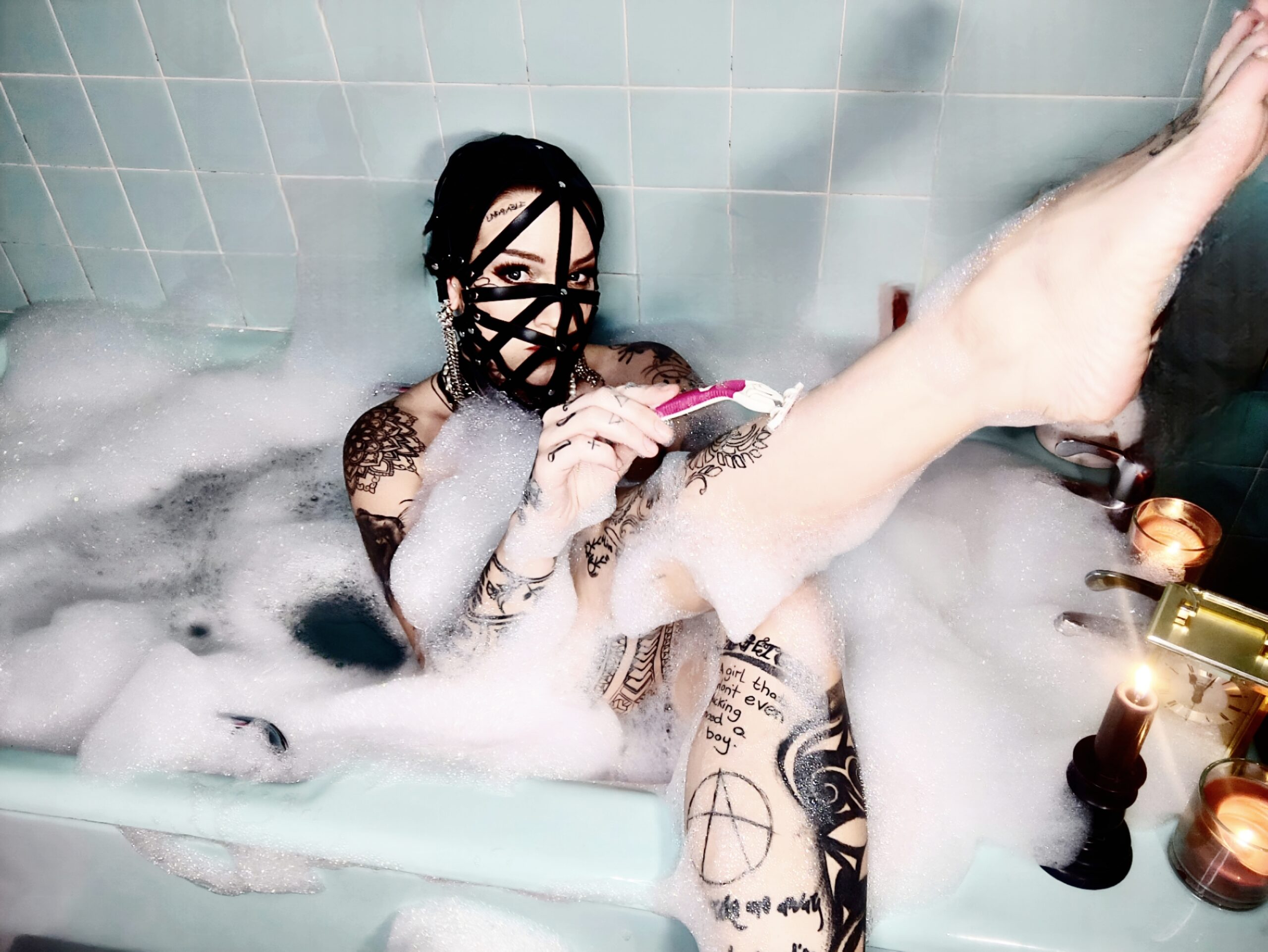What It Means To Be Pansexual In A World Of Gender And Sexual Labels
itzadmin
- 0
Understanding Pansexuality
In a world increasingly focused on defining and categorizing identities, understanding pansexuality becomes crucial. Beyond simple definitions and labels, it’s important to explore what it truly means to be pansexual—the experience, the challenges, and the societal perceptions surrounding this unique sexual orientation.
Beyond the Binary
In a world increasingly focused on defining and categorizing identities, understanding pansexuality becomes crucial. Beyond simple definitions and labels, it’s important to explore what it truly means to be pansexual—the experience, the challenges, and the societal perceptions surrounding this unique sexual orientation.
Pansexuality is an identity characterized by attraction to people regardless of their gender identity or expression. It’s about seeing beyond traditional binary labels like male and female and recognizing the diversity of human experience.
- For pansexual individuals, love and attraction are not confined by gender.
- Pansexuality is distinct from bisexuality, which typically refers to attraction to two genders (often male and female). Pansexuality encompasses a wider spectrum, including those who identify as non-binary or genderfluid.
- Navigating societal perceptions can be challenging for pansexual people. Misunderstandings, stereotypes, and lack of representation can contribute to feelings of isolation or invisibility.
It’s important to remember that each pansexual person’s experience is unique, shaped by their individual background, beliefs, and personal journey.
Attraction Beyond Gender
In a world increasingly focused on defining and categorizing identities, understanding pansexuality becomes crucial. Beyond simple definitions and labels, it’s important to explore what it truly means to be pansexual—the experience, the challenges, and the societal perceptions surrounding this unique sexual orientation.
Pansexuality is an identity characterized by attraction to people regardless of their gender identity or expression. It’s about seeing beyond traditional binary labels like male and female and recognizing the diversity of human experience.
- For pansexual individuals, love and attraction are not confined by gender.
- Pansexuality is distinct from bisexuality, which typically refers to attraction to two genders (often male and female). Pansexuality encompasses a wider spectrum, including those who identify as non-binary or genderfluid.
- Navigating societal perceptions can be challenging for pansexual people. Misunderstandings, stereotypes, and lack of representation can contribute to feelings of isolation or invisibility.
It’s important to remember that each pansexual person’s experience is unique, shaped by their individual background, beliefs, and personal journey.
Challenging Labels and Norms
Understanding pansexuality goes beyond simple definitions; it requires exploring the lived experiences, challenges, and societal perceptions surrounding this diverse sexual orientation.
Pansexuality is an identity defined by attraction to people regardless of their gender identity or expression. It emphasizes seeing beyond traditional binary categories like male and female and recognizing the fluidity and diversity of human experience.
For pansexual individuals, love and attraction are not limited by gender. This means they can be attracted to people who identify as men, women, non-binary, or any other gender identity.
It is important to distinguish pansexuality from bisexuality. While both identities involve attraction to more than one gender, bisexuality typically refers to attraction to two genders, often male and female. Pansexuality encompasses a broader spectrum, including those who identify as non-binary or genderfluid.
Navigating societal perceptions can pose challenges for pansexual individuals. Misunderstandings, stereotypes, and limited representation can lead to feelings of isolation or invisibility.
It is crucial to remember that each person’s experience of being pansexual is unique and shaped by their individual background, beliefs, and personal journey.
Navigating Societal Perceptions
Understanding pansexuality goes beyond simple definitions; it requires exploring the lived experiences, challenges, and societal perceptions surrounding this diverse sexual orientation.
Misconceptions and Stereotypes
Understanding pansexuality goes beyond simple definitions; it requires exploring the lived experiences, challenges, and societal perceptions surrounding this diverse sexual orientation.
Pansexuality is an identity defined by attraction to people regardless of their gender identity or expression. It emphasizes seeing beyond traditional binary categories like male and female and recognizing the fluidity and diversity of human experience.
For pansexual individuals, love and attraction are not limited by gender. This means they can be attracted to people who identify as men, women, non-binary, or any other gender identity.
It is important to distinguish pansexuality from bisexuality. While both identities involve attraction to more than one gender, bisexuality typically refers to attraction to two genders, often male and female. Pansexuality encompasses a broader spectrum, including those who identify as non-binary or genderfluid.
Navigating societal perceptions can pose challenges for pansexual individuals. Misunderstandings, stereotypes, and limited representation can lead to feelings of isolation or invisibility.
It is crucial to remember that each person’s experience of being pansexual is unique and shaped by their individual background, beliefs, and personal journey.
Visibility and Representation
Navigating societal perceptions is a fundamental aspect of what it means to be pansexual. Pansexuality, an identity characterized by attraction to people regardless of gender, often encounters misunderstandings due to limited visibility and representation in mainstream media and culture.
This lack of representation can lead to feelings of isolation for pansexual individuals who may struggle to find others who understand their experiences. Stereotypes and misinformation about pansexuality can further complicate matters, perpetuating harmful misconceptions and hindering acceptance.
It is crucial to promote understanding and create a more inclusive environment where pansexual individuals feel seen, heard, and valued. This involves actively challenging stereotypes, educating others about pansexuality, and amplifying the voices of pansexual people through diverse media and platforms.
Finding Community and Support
Navigating societal perceptions is a fundamental aspect of what it means to be pansexual. Pansexuality, an identity characterized by attraction to people regardless of gender, often encounters misunderstandings due to limited visibility and representation in mainstream media and culture.
This lack of representation can lead to feelings of isolation for pansexual individuals who may struggle to find others who understand their experiences. Stereotypes and misinformation about pansexuality can further complicate matters, perpetuating harmful misconceptions and hindering acceptance.
It is crucial to promote understanding and create a more inclusive environment where pansexual individuals feel seen, heard, and valued. This involves actively challenging stereotypes, educating others about pansexuality, and amplifying the voices of pansexual people through diverse media and platforms. Finding community and support is essential for the well-being of pansexual individuals. Connecting with others who share similar experiences can provide a sense of belonging, validation, and emotional support.
Online forums, social media groups, and local LGBTQ+ organizations can offer spaces where pansexual people can connect with like-minded individuals, share their stories, and find resources and guidance.
Building supportive relationships with family and friends who are understanding and accepting is also crucial. While coming out to loved ones may be challenging, it can lead to greater emotional support and a sense of openness within personal relationships. Remember, you are not alone. sex doll lesbian There are countless pansexual individuals navigating the world and seeking connection.
Experiences of Pansexual Individuals
Understanding pansexuality goes beyond simple definitions; it requires exploring the lived experiences, challenges, and societal perceptions surrounding this diverse sexual orientation.
Pansexuality is an identity defined by attraction to people regardless of their gender identity or expression. It emphasizes seeing beyond traditional binary categories like male and female and recognizing the fluidity and diversity of human experience.
For pansexual individuals, love and attraction are not limited by gender. This means they can be attracted to people who identify as men, women, non-binary, or any other gender identity.
It is important to distinguish pansexuality from bisexuality. While both identities involve attraction to more than one gender, bisexuality typically refers to attraction to two genders, often male and female. Pansexuality encompasses a broader spectrum, including those who identify as non-binary or genderfluid.
Navigating societal perceptions can pose challenges for pansexual individuals. Misunderstandings, stereotypes, and limited representation can lead to feelings of isolation or invisibility.

It is crucial to remember that each person’s experience of being pansexual is unique and shaped by their individual background, beliefs, and personal journey.
Personal Stories and Perspectives
Pansexuality is an identity defined by attraction to people regardless of their gender identity or expression. It emphasizes seeing beyond traditional binary categories like male and female and recognizing the fluidity and diversity of human experience.
For pansexual individuals, love and attraction are not limited by gender. This means they can be attracted to people who identify as men, women, non-binary, or any other gender identity.
It is important to distinguish pansexuality from bisexuality. While both identities involve attraction to more than one gender, bisexuality typically refers to attraction to two genders, often male and female. Pansexuality encompasses a broader spectrum, including those who identify as non-binary or genderfluid.
Navigating societal perceptions can pose challenges for pansexual individuals. Misunderstandings, stereotypes, and limited representation can lead to feelings of isolation or invisibility. It is crucial to remember that each person’s experience of being pansexual is unique and shaped by their individual background, beliefs, and personal journey.
One pansexual individual shared, “Growing up, I always felt different. I was attracted to people regardless of their gender, but the labels and societal expectations didn’t fit. It took me a long time to understand and accept myself as pansexual, but it’s been incredibly liberating.”
Another individual expressed, “Being pansexual has taught me to challenge rigid binary thinking and embrace the diversity of human experience. It’s about seeing people for who they are, not based on societal norms or expectations.”
It’s important to remember that these are just two examples, and every pansexual person’s story is unique.
The Spectrum of Identity
Pansexuality is an identity defined by attraction to people regardless of their gender identity or expression. It emphasizes seeing beyond traditional binary categories like male and female and recognizing the fluidity and diversity of human experience.
For pansexual individuals, love and attraction are not limited by gender. This means they can be attracted to people who identify as men, women, non-binary, or any other gender identity.
It is important to distinguish pansexuality from bisexuality. While both identities involve attraction to more than one gender, bisexuality typically refers to attraction to two genders, often male and female. Pansexuality encompasses a broader spectrum, including those who identify as non-binary or genderfluid.

Navigating societal perceptions can pose challenges for pansexual individuals. Misunderstandings, stereotypes, and limited representation can lead to feelings of isolation or invisibility.
It is crucial to remember that each person’s experience of being pansexual is unique and shaped by their individual background, beliefs, and personal journey.
One pansexual individual shared, “Growing up, I always felt different. I was attracted to people regardless of their gender, but the labels and societal expectations didn’t fit. It took me a long time to understand and accept myself as pansexual, but it’s been incredibly liberating.”
Another individual expressed, “Being pansexual has taught me to challenge rigid binary thinking and embrace the diversity of human experience. It’s about seeing people for who they are, not based on societal norms or expectations.”
It’s important to remember that these are just two examples, and every pansexual person’s story is unique.
Relationships and Intimacy
Understanding pansexuality involves recognizing it as more than just a label; it’s about embracing a worldview that celebrates the fluidity of gender and the diversity of human experience. Pansexual individuals are attracted to people regardless of their gender identity or expression.
For them, love and attraction transcend traditional binary categories like male and female. This means they can be drawn to people who identify as men, women, non-binary, or any other gender identity.
It’s important to differentiate pansexuality from bisexuality. While both identities involve attraction to multiple genders, bisexuality typically refers to attraction to two genders, often male and female. Pansexuality encompasses a broader spectrum, including those who identify as non-binary or genderfluid.
Navigating societal perceptions can present unique challenges for pansexual individuals. Misunderstandings, stereotypes, and limited representation can lead to feelings of isolation or invisibility.
Creating a more inclusive society requires challenging these misconceptions, fostering open conversations, and amplifying the voices and experiences of pansexual people.
Relationships for pansexual individuals are as diverse as their attractions. They can find love and connection with partners of any gender identity, building meaningful bonds based on shared values, interests, and mutual respect.
Visit now to read the full feature
Get deeper insight from this article
- Skin Pen Microneedling Near Walton On Thames, Surrey - November 6, 2025
- Sculptra Surrey – Collagen Stimulation Therapy Near Staines, Surrey - November 4, 2025
- Redensity 1 Skin Booster Treatments Near Hersham, Surrey - November 1, 2025
